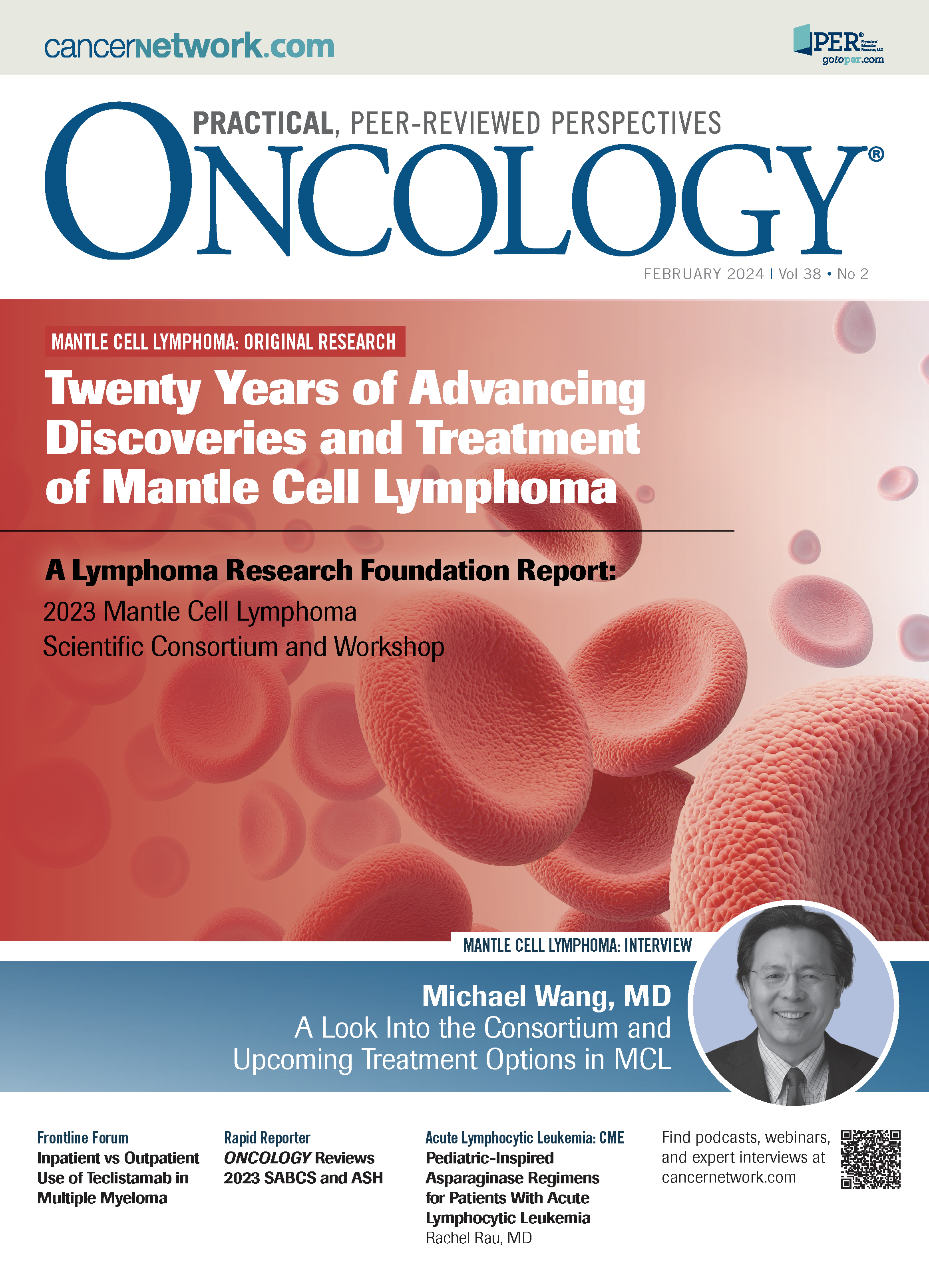Consortium Effort Drives Progress in Mantle Cell Lymphoma Research
Michael Wang, MD, gives an overview of the progress that has been made in mantle cell lymphoma research and where research should be focused on new treatment strategies and improved understanding of the disease.
Michael Wang, MD, gives an overview of the progress that has been made in mantle cell lymphoma research and where research should be focused on new treatment strategies and improved understanding of the disease.

The 20th Mantle Cell Lymphoma (MCL) Consortium and Scientific Workshop hosted by the Lymphoma Research Foundation was created so experts can share knowledge and advance research on MCL. According to Michael Wang, MD, it is important to collaborate in this rare disease, while also highlighting how the consortium has been instrumental in promoting clinical trials, basic research, and improving the translation of research findings into new treatments for patients.
Wang, professor in the Department of Lymphoma and Myeloma at The University of Texas MD Anderson Cancer Center, spoke about one of the major achievements of the consortium in 2023 was the participation in an international clinical trial that led to the approval of pirtobrutinib (Jaypirca) for relapsed/refractory MCL.
The use of surrogate end points was also discussed. Wang explains that while overall survival (OS) is the ideal outcome measure, it can take too long to determine in clinical trials. Therefore, progression-free survival (PFS) is often used as a surrogate end point, as it provides a good summary of a treatment's efficacy and durability.
Can you discuss the rationale behind creating this consortium?
Wang: MCL [mantle cell lymphoma] is a rare disease. [It’s important] to have the combined wisdom, exchange ideas of how to cure this disease, exchange clinical practice knowledge, share and promote the progress of clinical research, and further promote basic research and the connection between clinical research and basic research. The overall goal is to cure MCL. We have been united under the MCL consortium for many decades, and the consortium will continue to grow. In 2023, we reached a new peak of activity [in the field]; therefore, we summarized this activity in terms of basic research, or translation research, and clinical research for this article. We are very happy to share this in a publication so everybody in the world can read it.
Experts across the field came together to discuss a range of topics. Which do you think was the most prevalent?
Wang: I’m mainly a clinician and clinical researcher, and I do some translational research as well. The most important is our advances in therapeutics because this directly [benefits] our patients. One of the major advances in 2023 is that the consortium and the many investigators in the consortium participated in this international clinical trial with pirtobrutinib in relapsed/refractory [MCL] because the result [from the phase 1/2 BRUIN trial (NCT03740529)] is so good. The response rate was 50%, and the complete response rate was 13%. Because of the performed efficacy [and the tolerability] of pirtobrutinib, the FDA approved this drug for relapsed/refractory MCL in the United States in January 2023. Therefore, we have added another oral treatment for our patients…because this is a very well-tolerated pill and is highly effective.1 In the conclusion of the article, surrogate end points were discussed.
Can you expand on what they are and why they’re important?
Wang: We have many surrogate end points, with the best being overall survival OS. If you use OS, you will wait for too many years [for results, which] will slow down the clinical research. We use the surrogate marker called PFS. This is the internationally recognized surrogate end point, instead of OS. PFS is a good summary of efficacy plus durability. That’s why it is in many clinical trials, especially the international phase 3 trials. It will continue to be a great surrogate marker for the clinical trials. The issue is that the end point for PFS is significantly different, in favor of the treatment arm. However, the OS may not be different. If you have OS [that is] not statistically different but still in favor of the treatment arm…the PFS difference will be very significant. That’s the surrogate marker.
Where should future research efforts be focused in MCL?
Wang: The No. 1 thing is to continue to develop new therapies against different targets—not only our current different targets but also different therapies. We also need to continue to generate chimeric antigen receptor [CAR] T cells, not only against CD19 but [also] against other targets. We will focus on targeted therapies, developed with CAR T-cell therapies and we need to pay attention to other immunotherapies, such as the bispecific antibody glofitamab-gxbm [Columvi], another antibody called epcoritamab-bysp [Epkinly], and more to come. We’re also combining polatuzumab vedotin-piiq [Polivy], which is the antibody immunoconjugate, plus mosunetuzumab-axgb [Lunsumio], which is a bispecific antibody; this combination is also very effective. We continue to focus on the development of therapeutics, but we [must also] understand the mechanisms of resistance because, after a while, every therapy becomes resistant. We hope we can understand the mechanism of this so we can bypass and use the combination to overcome the resistance. Those are the main areas, in my opinion.
Reference
- FDA grants accelerated approval to pirtobrutinib for relapsed or refractory mantle cell lymphoma. FDA. January 27, 2023. Accessed January 5, 2024. https://bit.ly/47qhzyQ1.

Newsletter
Stay up to date on recent advances in the multidisciplinary approach to cancer.
Highlighting Insights From the Marginal Zone Lymphoma Workshop
Clinicians outline the significance of the MZL Workshop, where a gathering of international experts in the field discussed updates in the disease state.